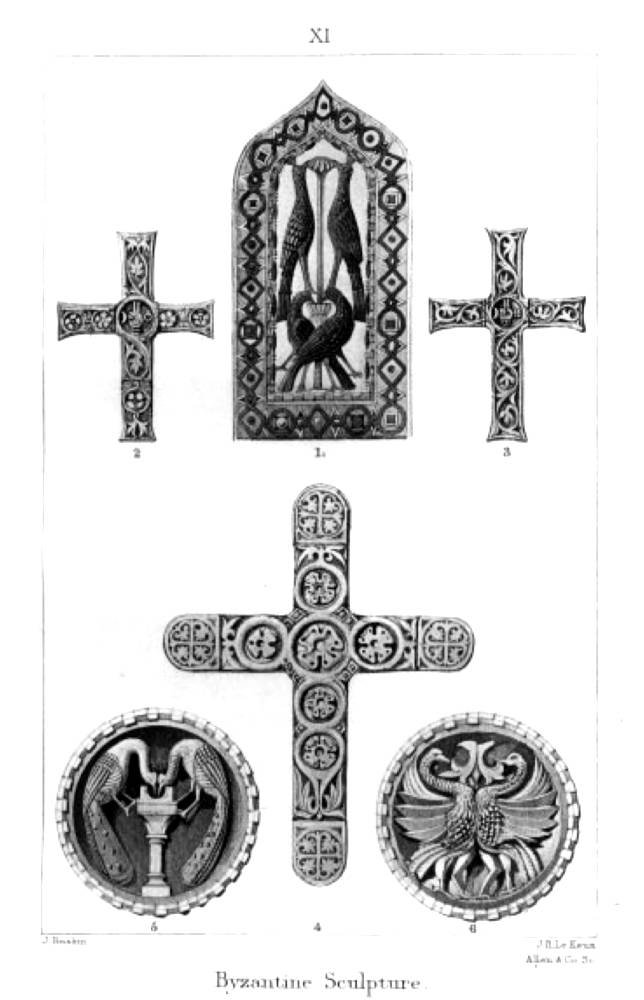
Ruskin’s brief guide to Venetian architecture included near the end of the third volume of The Stones of Venice describes Campo Santa Maria Mater Domini as “a most interesting little piazza, surrounded by early Gothic houses, once of singular beauty; the arcade at its extremity, of fourth-order windows, drawn in my folio work is one of the earliest and loveliest of its kind in Venice, and in the houses at the side is a group of second-order windows with their intermediate crosses, all complete, and well worth careful examination” (11.392).
Earlier, in the second volume, while charting the development of the shapes of Byzantine and Gothic windows, Ruskin cites one from this building (10.304), and in 1872 when engaged in a debate about style of architecture in letters to the editor of The Pall Mall gazette, Ruskin again refers to this building’s windows.

Byzantine Sculpture. John Ruskin, artist. J. H. Le Keux, engraver. Facing 10.166.
The Stones of Venice cites Palazzo Zene-Bon again when discussing a different topic, the wall decoration of Venetian secular buildings, particularly palazzi. There Ruskin points out that “The cross was apparently an invariable ornament, placed either in the centre of the archivolt of the doorway, or in the centre of the first story above the windows; on each side of it the circular and oblong ornaments were used in various alternation. In too many instances the wall marbles have been torn away from the earliest Byzantine palaces, so that the crosses are left on their archivolts only. The best examples of the cross set above the windows are found in houses of the transitional period: one in the Campo Sta M. Formosa; another, in which a cross is placed between every window, is still well preserved in the Campo Sta Maria Mater Domini; another, on the Grand Canal, in the parish of the Apostoli, has two crosses, one on each side of the first story, and a bas-relief of Christ enthroned in the centre; and finally, that from which the larger cross in the Plate was taken is the house once belonging to Marco Polo, at San Giovanni Grisostomo” (10.166).


More of Ruskin's Venice
- St. Mark’s
- The Palazzo Ducale, Venice
- The Scuola de San Rocco
- On the Grand Canal
- Leaving the Grand Canal
- On the way to Venice from the mainland
- Venice: Details and Corners
Photographs 2020. [You may use these images without prior permission for any scholarly or educational purpose as long as you (1) credit the photographer and (2) link your document to this URL in a web document or cite the Victorian Web in a print one.]
Bibliography
Ruskin, John. The Works. Ed. E. T. Cook and Alexander Wedderburn. “The Library Edition.” 39 vols. London: George Allen, 1903-1912.
� �
Last Modified 23 March 2020